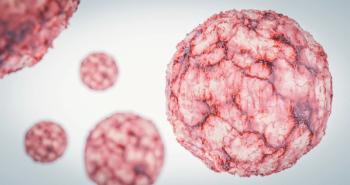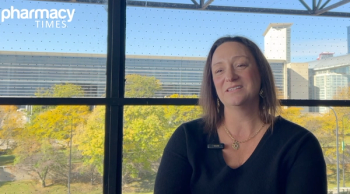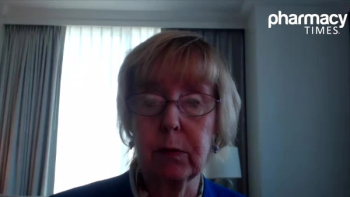
Heparin Use in Patients with a History of Heparin-Induced Thrombocytopenia
Is it ever appropriate to use heparin in patients with a history of HIT?
Heparin-induced thrombocytopenia (HIT) is an immune-mediated reaction occurring in 0.2-5% of adults treated with heparin causing a ≥50% drop in platelets from baseline.
Patients with HIT have a high risk of thrombosis, which can lead to serious complications including limb loss and death. HIT occurs when heparin binds to platelet factor-4 (PF4), forming heparin:PF4 complexes. HIT antibodies (usually IgG) react with heparin:PF4 complexes to form large macromolecules that activate platelets and monocytes, leading to the release of prothrombotic mediators. This serious reaction typically develops 5-10 days after heparin exposure, but can occur within hours to days after recent re-exposure.1
If heparin-exposed patients have developed this life-threatening reaction in the past, why risk reexposure?
- Unfractionated heparin (UFH) is the clear anticoagulant of choice in 3 conditions — cardiac surgery, vascular surgery, and hemodialysis.
- Anti-PF4/heparin antibodies are among the most transient in clinical medicine (40-100 days).
- A minimum of 5 days is required to generate (or regenerate) pathogenic platelet-activating antibodies
- Laboratory tests are available to detect anti-PF4/heparin antibodies (enzyme immunoassay) and platelet activation (serotonin-release assay).
UFH: Anticoagulant of Choice in Cardiac, Vascular surgery, and Hemodialysis2
In cardiac surgery, vascular surgery, and hemodialysis, there are concerns surrounding the efficacy, safety, and reversibility of non-heparin anticoagulants. Specifically, for cardiopulmonary bypass patients, the quality of data are not high enough to consider bivalrudin and argatroban as validated options. UFH is also preferred by surgeons due to familiarity, its short half-life, easy monitoring, and its reversibility with protamine sulfate. Additionally, in hemodialysis patients it is expensive and inconvenient to use alternative non-heparin anticoagulants for intermittent hemodialysis three times per week.
Transiency of Anti-PF4/heparin Antibodies2
I
n patients that develop HIT, anti-PF4/heparin antibodies typically develop in ~5 days. However, these antibodies are incredibly transient, usually disappearing within 40-100 days. In some patients, antibodies vanish as quickly as 1-2 weeks. In fact, the probability of a positive serotonin-release assay (SRA), a specific test identifying platelet activation, is <5% by 3 months and negligible by 12 months. This allows for heparin re-exposure in emergency settings when there is no time for a repeat SRA.
Regenerating Pathogenic Platelet-activating Antibodies2
The adaptive immune response is a fundamental concern regarding heparin re-exposure in patients with a history of HIT. If patients exposed to heparin develop this life-threatening reaction, the classic, adaptive immune response tells us that upon re-exposure there will be a more rapid and severe secondary response.
Interestingly, HIT does not follow these rules. In fact, any immunizing exposure to heparin, whether first or subsequent re-exposure, leads to a relatively rapid immune response (~5 days). This means that heparin re-challenge despite prior HIT often induces anti-PF4/heparin antibodies, but no faster than seen with typical HIT. It is believed that all cases of HIT likely represent a type of “secondary” immune response. Although the reason for this is unknown, one hypothesis is that “primary” immunization occurs from exposure to PF4-coated bacteria.2,3,4
Since ~5 days of heparin exposure is required to regenerate HIT antibodies, short-term intraoperative or intermittent use should not result in recurrent typical-onset HIT.
Laboratory Tests1
Enzyme immunoassay (antibody assay): The enzyme immunoassay (EIA) is a high sensitivity, low specificity assay commonly used to rule out HIT. If negative, there is a low probability that a patient is experiencing HIT. However, 20% of orthopedic surgery and 70% of cardiopulmonary bypass patients may have circulating HIT antibodies even though the majority are not pathogenic and do not activate platelets to cause HIT.
Serotonin-release assay (platelet activation test): The serotonin-release assay (SRA) is a high specificity test for HIT, and is referred to as the gold standard. Unfortunately, it is not widely available and has a longer turnaround time compared to the EIA.
EIA’s and SRA’s can be utilized to carefully select patients who are candidates for re-exposure to heparin.
Key Recommendations
- If appropriate precautions are taken, the risk of HIT recurrence with intraoperative heparin use is modest and may be similar to the risk of HIT in a patient without a history of HIT.5
- Heparin use should be avoided in patients with a positive SRA.5 Using heparin in patients with a positive SRA puts them at risk for rapid-onset HIT, a subtype of HIT occurring within 24 hours in patients exposed to heparin within the past 30 days. Therapeutic plasma exchange (TPE) has been successfully used to convert SRA-positive patients to SRA-negative status. TPE is currently a category III recommendation, and its optimum role has not been established; decision making should be individualized.
- Full courses of heparin should be avoided in patients with a history of HIT.5 Patients with a history of HIT are more likely to develop platelet-activating antibodies (SRA seroconversion) within their anti-PF4/heparin response and thus to develop HIT if they receive postoperative heparin. Non-heparin anticoagulants should be chosen for postoperative anticoagulation in surgical patients. Using full courses of heparin puts patients at risk for typical-onset HIT recurrence.
- Development of any new/ unexplained platelet drop 5-10 days after heparin exposure should trigger a concern for delayed-onset HIT, a subtype of HIT that develops 5+ days after heparin therapy has been discontinued.5 Delayed-onset HIT occurs when IgG antibodies activate platelets even in the absence of heparin.
References
- Rondina MT, Walker A, Pendleton RC. Drug-induced thrombocytopenia for the hospitalist physician with a focus on heparin-induced thrombocytopenia. Hosp Practice. 2010;38(2):19-28.
- Warkentin TE, Anderson JA. How I treat patients with a history of heparin-induced thrombocytopenia. Blood. 2016;128(3):348-359.
- Warkentin TE, Sheppard JI. Serological investigation of patients with a previous history of heparin-induced thrombocytopenia who are reexposed to heparin. Blood. 2014;123(16):2485-2493.
- Warkentin TE, Sheppard JI. Studies of the immune response in heparin-induced thrombocytopenia. Blood. 2009;113(20):4963-4969.
- Dhakal P, Giri S, Pathak R, Bhatt VR. Heparin reexposure in patients with a history of heparin-induced thrombocytopenia. Clin Appl Thromb Hemost. 2015;21(7):626-631.
Newsletter
Stay informed on drug updates, treatment guidelines, and pharmacy practice trends—subscribe to Pharmacy Times for weekly clinical insights.



















































































































































































































